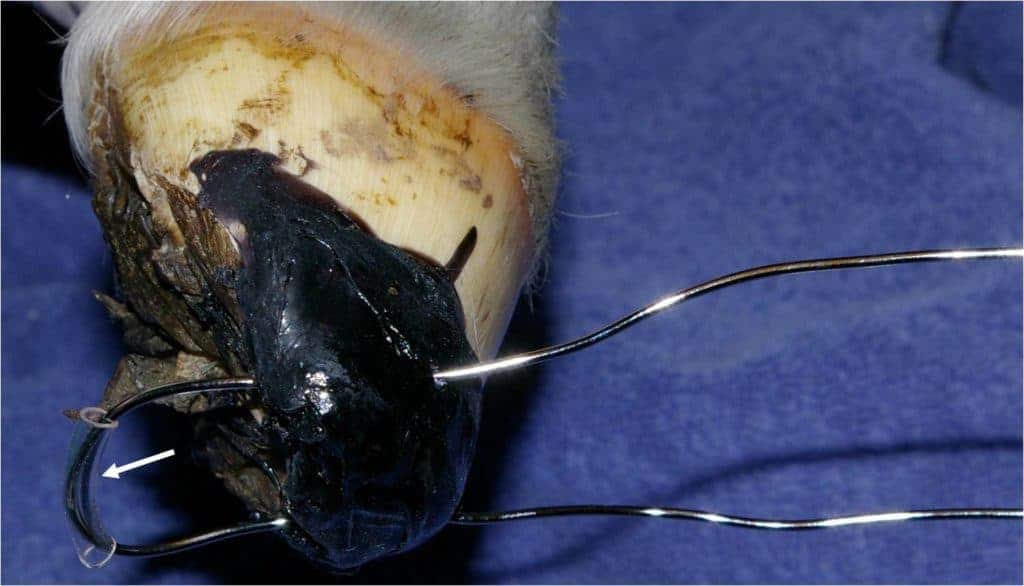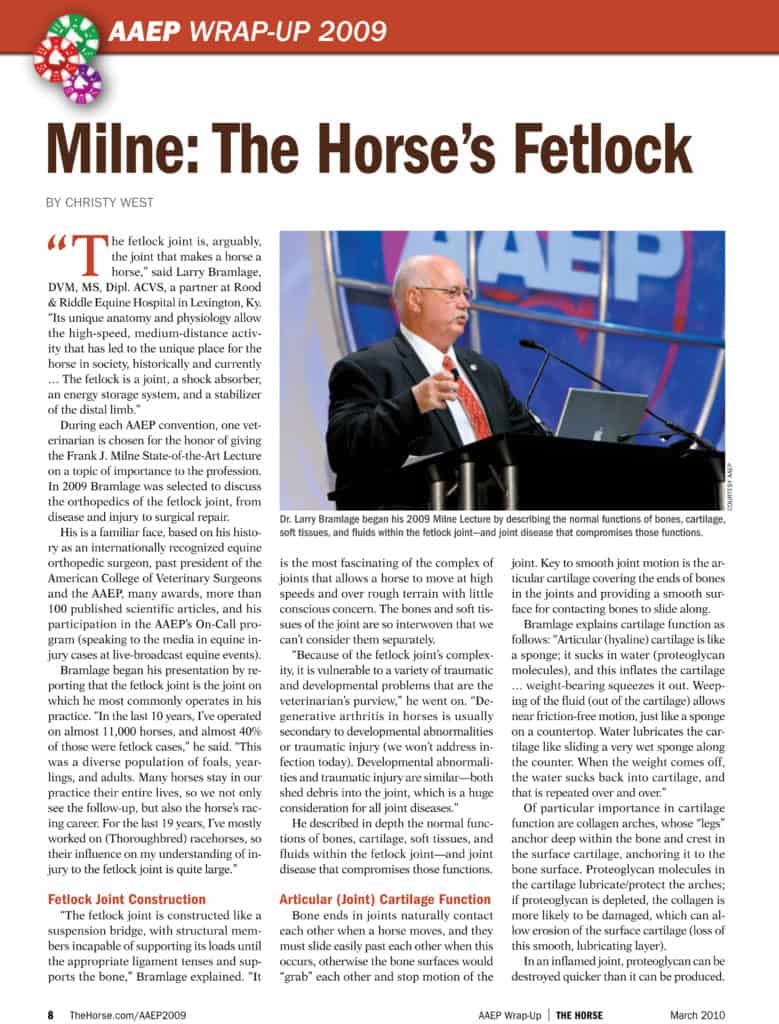
Shock Wave Therapy for Lower Leg Wounds on Horses
Extracorporeal shock wave therapy could be a promising tool for treating equine lower limb wounds.

Extracorporeal shock wave therapy could be a promising tool for treating equine lower limb wounds.

Research shows that various angles of the outer and inner hoof are linked to different kinds of lameness.

A single impact injury did not cause generalized osteoarthritis in the fetlock during the study period.

A novel treatment technique for correcting flexural deformities in foals showed promise in a recent study.

Nearly 50% of high-performance barrel racers evaluated showed radiographic changes in their fetlock joints.

One researcher described how to evaluate horses’ feet, legs, and gaits for potential soundness or lameness.

A Thoroughbred filly undergoes arthroscopic surgery to remove a bone chip from her left hind fetlock, increasing her chances of staying sound for horse racing. Dr. Chris Johnson of Woodford Equine Hospital in Versailles, Ky, explains the procedure.
Horses have traditionally been considered obligate four-legged animals; however, the dogma is changing.
Be it for racing, reining, or riding, a horse needs to be put together properly; but does a horse need to be put together perfectly?
Horses are likely to sustain coronary band and hoof wall injuries at one time or another. These injuries can carry long-term performance and soundness consequences.

During each convention of the American Association of Equine Practitioners, one veterinarian is chosen for the honor of giving the Frank J. Milne State-of-the-Art Lecture on a topic of importance to the profession. In 2009 Larry Bramlage, DVM, MS, Dipl. ACVS, was selected to discuss the orthopedics of the horse’s fetlock joint, from disease and injury to surgical repair.
Learn about the normal functions of bones, cartilage, soft tissues, and fluids within the fetlock joint.
Learn how to keep splints (bony lower leg swellings) from becoming permanent blemishes or problems that interfere with a horse’s athletic career.
Results of a clinical study showed that distal limb wounds treated with a dressing containing esterified hyaluronic acid (hyaluronan) showed no improvement in healing as compared to untreated wounds.
To evaluate the effect of an
Hunt discussed several limb and hoof deformities in foals and recommendations for correcting or managing them during the “Putting Science into Farriery” session at the 2008 Convention of the American Association of Equine Practitioners. One of his bi

Windpuffs are soft, fluid-filled swellings toward the back of the fetlock joint, resulting from inflamed deep digital flexor tendon sheaths. Most commonly, these puffy enlargements are symptomless blemishes–old and cold, the result of years of hard work.
Stay on top of the most recent Horse Health news with
"*" indicates required fields